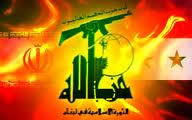 Iran and Hezbollah have built a 50,000-strong parallel force in Syria to help prolong the life of the Assad regime and to maintain their influence after his fall, Israel’s military intelligence chief has claimed.
Iran and Hezbollah have built a 50,000-strong parallel force in Syria to help prolong the life of the Assad regime and to maintain their influence after his fall, Israel’s military intelligence chief has claimed.
Major General Aviv Kochavi said Iran intended to double the size of this Syrian “people’s army”, which he claimed was being trained by Hezbollah fighters and funded by Tehran, to bolster a depleted and demoralised Syrian army.
Kochavi, the director of military intelligence in the Israel defence forces (IDF), also said Assad’s troops had readied chemical weapons but so far had not been given the order for them to be used.
At the same time, he warned of the increasing sway of extremist groups in the opposition, particularly the al-Nusra Front, which he claimed was beginning to infiltrate Lebanon and was making connections with a Sinai-based militant organisation, Ansar Bait al-Maqdis, which is focused on attacks on Israel.
Israel opposes the western arming of Syrian rebels because of its fears that the weapons will end up in the hands of such groups.
Defence officials say they are focused on Assad’s sizeable arsenal of chemical weapons and missiles and they are prepared to carry out more air strikes to stop such arms being transferred to Hezbollah, even at the risk of what a senior official predicted would be an ugly new war in Lebanon.
Western and Israeli governments have long alleged that members of the Iranian Revolutionary Guards are advising Assad’s generals, and that Hezbollah guerillas are fighting alongside Syrian government troops. Israeli officials say the commander of the Revolutionary Guards’ elite Quds Force, Qassem Suleimani, has been in Damascus to oversee operations.
In his speech on Thursday, Kochavi went much further and claimed that since last June Tehran had been using Hezbollah to build up a large Syrian militia that would be Iranian-controlled even in the event of Assad’s fall from power.
“The damages of the imminent fall of Syria are very high for both Iran and Hezbollah. Iran is losing a sole ally in the region surrounding Israel. It will lose the ability to transfer weaponry through Syria to Hezbollah. Iran and Hezbollah are both doing all in their power to assist Assad’s regime.
“They support Assad operationally on the ground, with strategic consultation, intelligence, weapons,” Kochavi told the Herzliya Conference, a meeting of security officials and analysts in Israel.
“Most recently, they are establishing a ‘people’s army’ trained by Hezbollah and financed by Iran, currently consisting of 50,000 men, with plans to increase to 100,000. Iran and Hezbollah are also preparing for the day after Assad’s fall, when they will use this army to protect their assets and interests in Syria.”
He said the Syrian regular army was crumbling, claiming that several successive recruitment drives had failed, realising only 20% of their targets as young men had fled rather than join up. The International Institute of Strategic Studies yesterday reported that from a notional strength of 220,000, the army had withered to a core of about 50,000 the regime could rely on. The Institute for the Study of War in Washington estimated the loyal core at 65,000.
Israel has warned the UK and France against arming Syrian rebels, arguing there will be no guarantees that sophisticated weapons such as portable anti-aircraft missiles will not ultimately find their way to al-Qaida affiliates and other extremist groups, and be turned against Israel.
Kochavi claimed the al-Nusra Front had sent “subsidiaries” into Lebanon and had forged connections with Ansar Bayt al-Maqdis (also known as Ansar Jerusalem), which has launched attacks into Israel from the Sinai. He said al-Nusra intended to help the group establish cells in Lebanon.
Israel’s immediate focus is on preventing any of Assad’s stockpile of chemical weapons and anti-aircraft and anti-ship missiles reaching Lebanon.
Israeli officials say they have “intimate co-operation” with US intelligence on tracking these weapons. In February Israeli planes bombed a convoy suspected of transferring modern anti-aircraft missiles from Syria to Hezbollah, and Israeli officials, while not formally acknowledging them, would not hesitate to strike again.
“There is a readiness to strike again and an awareness that this could escalate. Israel is heavily focused on this, but worried that the rest of the world is not,” an Israeli security source said.
A senior IDF official said there were an estimated 50,000 rockets of various ranges in Hezbollah hands, of which a few thousand were capable of reaching Tel Aviv. He acknowledged that Israeli air strikes could trigger a war which neither Israel nor Hezbollah wanted at this time, in which Hezbollah would use much of this arsenal, forcing the IDF to launch another invasion of southern Lebanon, as he said only ground troops could root out the rockets and launchers that were hidden in south Lebanese villages.
“Hezbollah will give a house to a fighter in a village. It will be a three-storey house and one storey is for the storage of missiles,” the IDF official said.
“In a future war, we would have to bomb and to send troops into the village. Unfortunately, it is not getting to be surgical. We will do everything we can to evacuate the area of civilians, but I think it’s going to be ugly.”
Guardian
Leave a Reply
You must be logged in to post a comment.